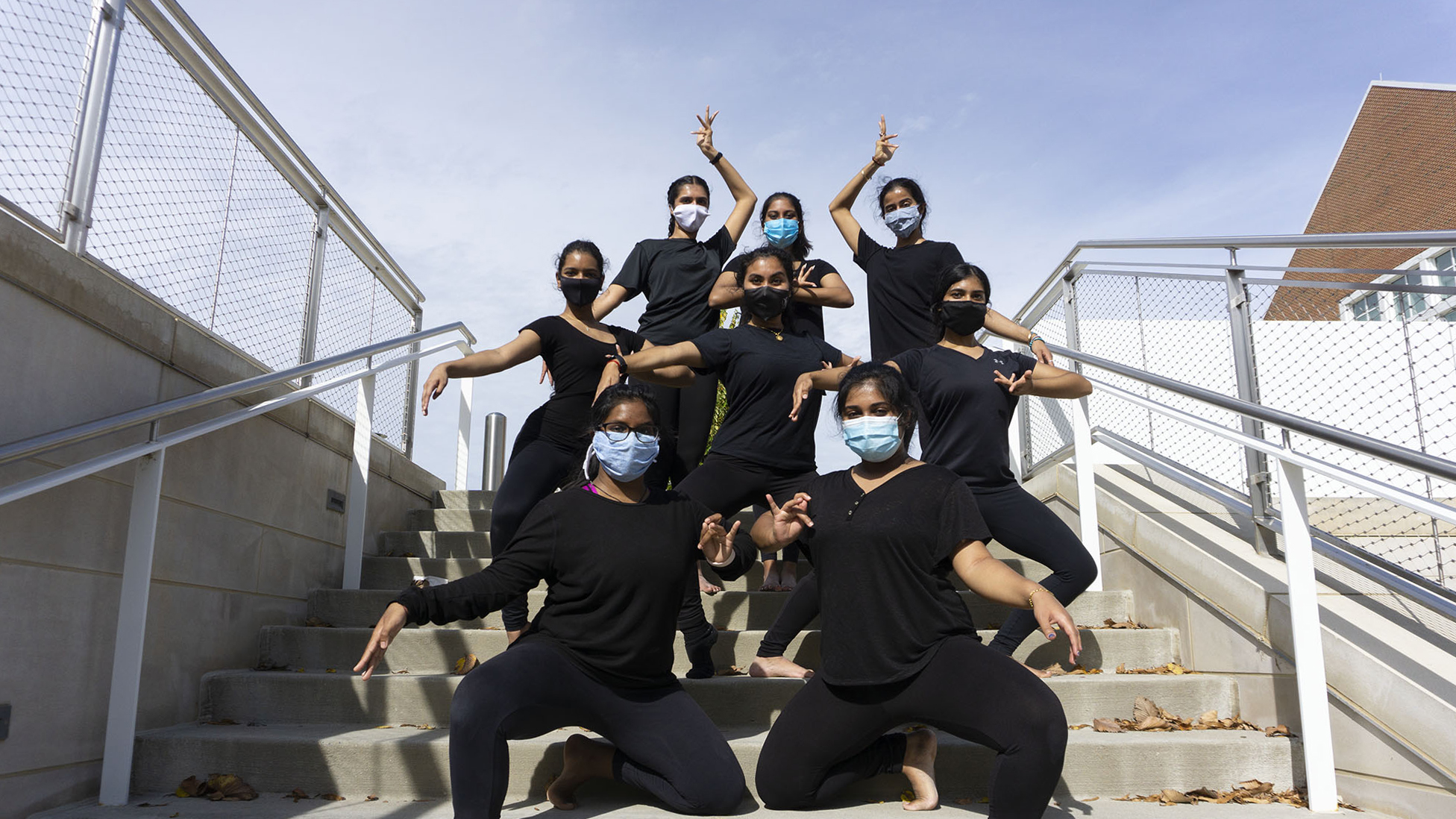By Mira Varghese
For The Diamondback
With in-person events and gatherings canceled and social distancing the new norm, members of the University of Maryland’s South Asian dance teams have faced difficulties finding ways to keep their art form and sense of community alive.
For many South Asian students at this university, dance is an essential way to express their culture, but the pandemic has prohibited many teams from holding in-person practices and competing.
Maryland Dhoom, a Bollywood fusion dance team, has chosen to dance noncompetitively for the year, said Simran Chertara, an adviser for the team and a junior information systems and operations management and business analytics major.
The team made the decision not to compete to maintain members’ safety and because its national competitions were canceled, Chertara said. But Dhoom has been able to move some of its activities online.
“The plan is to do everything virtually using Zoom,” Chertara said. “Just having … workshops within the team so they can still develop as dancers.” The team has also been able to conduct fall recruitment with virtual tryouts.
EntouRAAS, another South Asian dance group at this university, has had its entire season canceled.
Nikita Patel is co-captain of EntouRAAS, who perform the upbeat energetic Gujarati dances Raas and Garba. The senior information science major said the group has gone from practicing three days a week to zero during the fall semester.
[Afro-Latino students at UMD take pride in identities despite years of prejudices]
Despite the lack of practice, EntouRAAS has still recruited new members, Patel said, and it’s trying to boost engagement via social media and email.
But the absence of dance performances and competitions due to the pandemic has impacted how South Asian students connect and unite to share their cultures, and for Patel, not being able to perform means she can’t express parts of her identity.
“I think college is the time where we really get to express ourselves like this,” Patel said. “After you graduate, you’re not going to be able to do Garba or anything, like on a dance team.”
Some of this university’s own South Asian dance competitions, such as Maryland Minza and Maryland Masti, decided to forgo their competitions this season.
Minza’s executive director, Yash Kamdar, a junior finance and operations management and business analytics major, said the cancellation was necessary to keep participants safe.
“The issue with dance [competitions] is there’s a lot of contact and connection and a lot of planning both from the dance portion but also the dance teams,” Kamdar said. “Even holding a dance [competition] is encouraging bad behavior for dance teams who want to compete in the first place.”
[UMD organizations fight to reform policing on campus]
Minza and Masti anticipate their next competitions will take place in February 2022.
“We’re optimistic,” said Anjali Dhamsania, Masti director and a junior chemical engineering major. “But it is really dependent on what the global pandemic situation is like.”
While groups such as Dhoom and EntouRAAS won’t be competing this year, Moksha — an Indian classical dance team — will be.
The team will participate in a completely virtual competition, with a video submission serving as the requirements for entry, said Aditi Sundararaman, one of Moshka’s captains.
“I think [the competition is] allowing more flexibility because [of] social distancing and stuff, so there are a bunch of different formats available, like tiled video or getting together, but dancing socially distanced,” the senior computer science major said.
But even though some teams have found ways to adjust to the current online environment, the pandemic has still put a strain on their members’ bonds and friendships.
“It’s definitely impacted us heavily because we go from being so close, like we went from being so close physically every day to just not seeing each other at all,” Patel said.
Sundararaman said being able to meet in person is important not only to build community, but to choreograph and create performance ideas, adding that being in person makes it easier to blend ideas and explore different directions of dance.
But although many South Asian students may not be able to physically gather and connect through dance this semester, Kamdar said the community will remain united.
“The brown community here at UMD is pretty strong and resilient,” Kamdar said.



